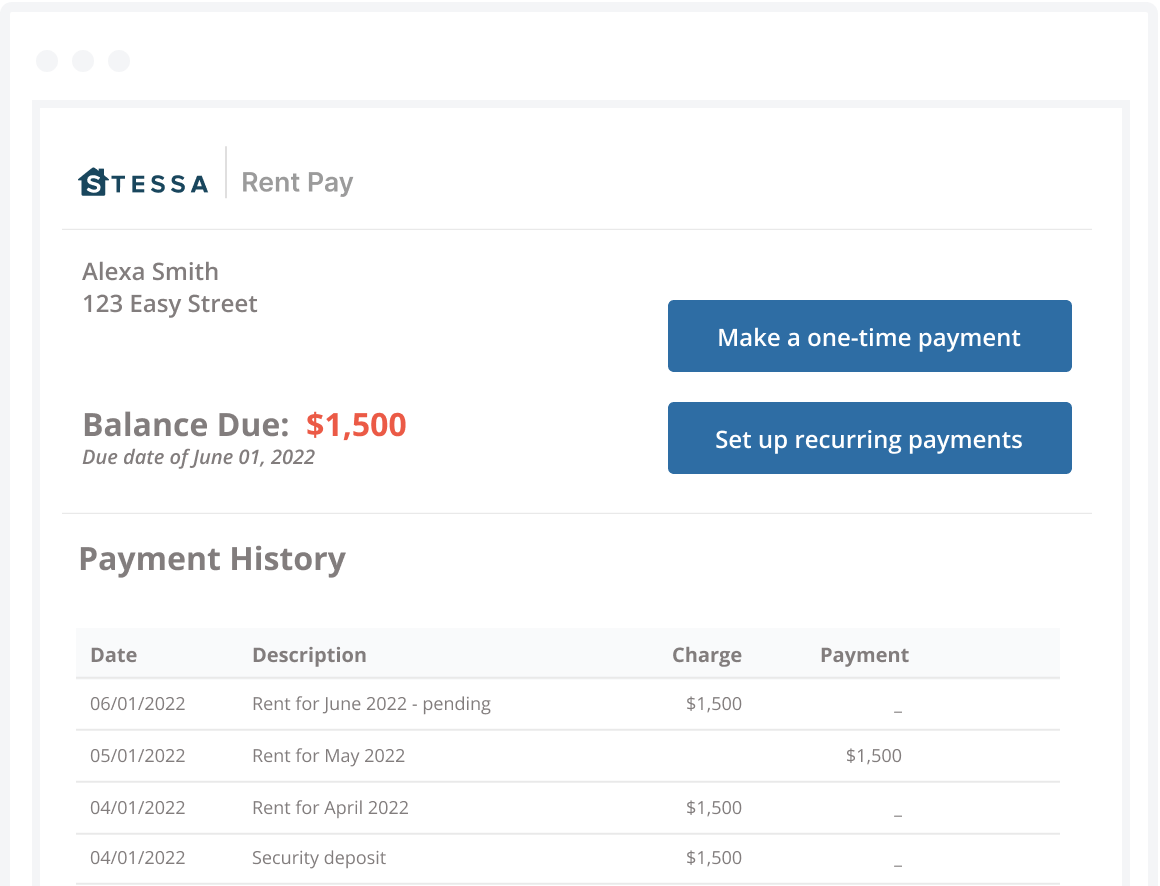Raising the rent can be a tricky proposition, but it’s one of the most important conversations that a property manager or self-managing landlord can have with a tenant. A landlord uses a rent increase letter to get the conversation started and inform a tenant that the rent will increase.
While it’s probably safe to say that most landlords look forward to extra rental income, there are certain best practices to follow and local and state restrictions to verify before raising the rent.
In this article, we’ll discuss some common scenarios in which a landlord can and cannot raise the rent, some essential things to do before increasing the rent, and how to write a rent increase notice to send to a tenant.*
Key takeaways
- A landlord may generally raise the rent when the lease ends depending on local and state laws. For example, if the tenant has a month-to-month lease, state landlord-tenant laws generally require a landlord to give a tenant at least 30-days notice before increasing the rent.
- There may be a limit to how much the rent can increase and, sometimes, whether the rent can be increased at all for a property located in an area with rent stabilization or rent control laws.
- Landlord-tenant laws often state how much notice a landlord must give a tenant before raising the rent.
- Factors to consider before increasing the rent include rent comparables for similar rentals in the area, recent inflation trends, determining how much to raise the rent, and deciding whether or not to ask the tenant to “top-off” the existing security deposit.
When can a landlord increase the rent?
A landlord can usually increase the rent when the current lease ends, with exceptions of course.
If the rental property is located in a city or state with rent stabilization or rent control laws, there may be a limit to how much – and even if – a landlord can raise the rent. That being said, landlords with single-family rental homes and owner-occupied multifamily properties with four units or less are often exempt from local rent control.
A landlord must also wait until the end of the lease to raise the rent unless the terms and conditions of the lease allow a landlord to increase the rent in the middle of the lease.
If the tenant has a month-to-month lease, state landlord-tenant laws generally require a landlord to give a tenant at least 30-days notice before increasing the rent. Some states and local governments require more notice and also may limit the amount of the increase.
Most states also prohibit a landlord from raising the rent to discriminate or retaliate against a tenant, such as increasing a tenant’s rent because they filed a legal complaint against the landlord for not keeping the property in habitable condition.
Because a rent increase is more complex than it might seem, we strongly encourage landlords to consult state landlord-tenant laws and meet with a qualified real estate attorney before sending a rent increase letter to any tenant.
 Related: Looking for an easier way to collect rent from your tenants? Check out Stessa rent collection – a free feature that makes it easier for tenants to pay on time. Stessa also automates key tasks like deposits, receipts, and accounting. Get notified when a payment is made and when it’s been deposited in your account. Tenants can also enable Autopay to avoid missing rent due dates.
Related: Looking for an easier way to collect rent from your tenants? Check out Stessa rent collection – a free feature that makes it easier for tenants to pay on time. Stessa also automates key tasks like deposits, receipts, and accounting. Get notified when a payment is made and when it’s been deposited in your account. Tenants can also enable Autopay to avoid missing rent due dates.
Go here to create a free Stessa Essentials account.
Factors to consider before increasing the rent
Research is a crucial step to take before raising the rent. You want to make sure your ask is reasonable and reflective of the market. That’s not to say you can’t ask for more than a “market rent,” especially when your rental has premium features or compares favorably to the average rental in your area. Doing proper research helps make sure you’re prepared for pushback or questions from your tenant as to why their rent is increasing.
Here’s our suggested list of factors to consider when deciding whether and how much to increase the rent:
Rent comps
Sometimes landlords factor in an annual rent increase of between 3% and 5% on a rental property pro forma or their original underwriting. But the market doesn’t always tick up in an orderly fashion like an Excel spreadsheet.
For example, some cities with strong populations and job growth have recently seen significant rent increases. In cities like Boston and Hartford, there’s currently more demand for rental housing than supply, driving rents up by
5% or more year-over-year.
On the other hand, some cities like Las Vegas and Austin, are now experiencing significant rent decreases, on a year-over-year basis.
To understand actual conditions in the local marketplace and determine fair market rent, landlords can run rent comps using a variety of online resources like Stessa Rent Estimates, Rentometer, or Zillow(R) Rental Manager.
Lease term
Unless the lease or local laws state otherwise, rent increases are typically only allowed at the end of an existing lease term. A landlord with a typical one-year lease in place, might send the tenant a lease renewal notice that includes a rent increase 30 to 90 days before the lease’s termination date. The required lead-time can vary of course, depending on local and state laws.

In most states, if a tenant is on a month-to-month lease, a landlord is generally required to provide a tenant with at least 30 days’ notice before raising the rent. Some states and localities require more advance notice, while others also require that the notice be provided by a specific day of the calendar month.
Increase amount
A landlord normally raises the rent to generate additional rental income. Sometimes the motivation is to cover increasing operating expenses, such as rising property taxes or increasing insurance premiums.
In other scenarios, you might raise the rent simply to keep up with inflation or increase the current cash return on your rental property investment. Regardless, a rent increase should be clearly communicated and at least somewhat based on the current local market conditions.
For 2023, the rent hike amount will likely depend on a number of factors, but Realtor.com puts the average nationwide rental increase at 3% this year. If the rent is raised too high (or above market), a landlord may risk losing a good tenant or starting down a path of conflict and mistrust. In cities and states with rent stabilization or rent control regulations, the law may also dictate if and by how much a landlord can increase the rent.
Notice period
State landlord-tenant laws and customs of the local real estate market may suggest that a landlord should give a tenant 30 or 60 or even 90 days’ notice before increasing the rent, even if the lease is being renewed. The notice is usually given to a tenant in writing and may need to be delivered personally or sent by U.S. first class or certified mail, depending on local and state laws.
Security deposit
Increasing the rent might also lead to an increase in the security deposit. For example, if a landlord collects a security deposit equal to the monthly rent and the rent increases by $100 per month, the security deposit may also need to increase by $100. This is usually done at the landlord’s option and is worth making clear to a tenant alongside the rent increase.
Some landlords will collect the additional security deposit when the rent increase goes into effect, while others may opt not to ask the tenant for an additional security deposit at all. Waiving the security deposit increase can sometimes act as a nice incentive for a good tenant to sign a lease renewal.
What to include in a rent increase letter
There’s no “perfect” way to draft a rent increase letter, but it typically contains the following details:
- Date of the rent increase letter.
- Name and information of the tenant and landlord.
- Property address and unit number (if applicable).
- Reference to the expiration date of the existing lease.
- Current rent amount.
- Amount of rent increase.
- Date the rent increase will go into effect.
- Due date for accepting the rent increase.
- Time tenant has to provide a non-renewal notice if they do not agree to the rent increase.
- Note regarding the existing security deposit and whether an additional amount will be collected.
Sample rent increase letter
Below is an example of a basic rent increase notice for landlords to review with their attorney and/or customize. You can also download a rent increase letter either in a pdf or doc form here.
Rent Increase Letter
Date ____________________________
Tenant Name ___________________________________________
Address ________________________________________________
City, State, Zip Code ______________________________________
Dear (names of all tenants on the lease),
Your existing lease with an original start date of ___________ will expire on __________. Effective __________ (date) the monthly rent will increase from $ __________ to $ __________ per month.
Payment for the new monthly rent will be due on _________ (date) and on the first day of the month thereafter. The amount of your refundable security deposit will also increase by $ __________, and this additional security deposit amount will be due on __________ (date). The total amount due on __________ (date) will be $ __________.
Please reply by __________ (date) if you agree to this rent increase, and we will arrange a time to sign the lease renewal. If you do not agree with this rent increase, you are required to vacate the property by __________ (date).
Sincerely,
Landlord Name ________________________________________
Landlord Signature _____________________________________
Address ______________________________________________
City, State, Zip Code ____________________________________
Phone Number ________________________________________
A landlord will typically keep a copy of the rent increase letter as a standard business practice, along with a note of how the rent increase letter was delivered to the tenant.
How to deliver rent increase notice
It’s essential to proofread your rent increase letter before you send it to your tenant. Some landlords also have their attorneys review the notice to ensure it complies with local increase limits and that you’ve given enough notice to the tenant.
We highly recommend that you allocate the necessary time and expenditure to have your notice reviewed by a qualified attorney before sending it off.
Here are some of the most common methods for delivering a rent increase letter:
Certified mail
Certified mail allows you to collect a receipt as proof that the tenant has received the notice.
You can deliver a rent increase notice via email in some states if the lease allows. However, verifying that your tenant received the email may be challenging.
In-person delivery
This method provides immediate confirmation of a successful delivery, but may lead to further conversation in the moment, without the other party having the luxury of time to carefully consider the contents of the letter before responding.
Where to find a free rent increase letter
A real estate attorney or local property manager are two good sources for obtaining a sample rent increase letter that complies with local and state landlord-tenant laws. Some online sources for finding a free rent increase letter template include:
- Stessa rent increase notice [50+ landlords form]
- RentPrep rent increase letter (and delivery instructions)
- eForms rent increase notice with sample
- pdfFiller printable notice of rent increase forms and templates
- TemplateLab landlord friendly rent increase letters
- Zillow rent increase notice
How to increase the rent
 If a tenant agrees to a rent increase, the landlord has two options:
If a tenant agrees to a rent increase, the landlord has two options:
- Create a new lease agreement.
- Amend the existing lease.
From there, the landlord and tenant will sign the agreement, and both should receive a fully executed copy for their files.
FAQs on raising rent for tenants
If you are hoping to raise rent, but are still trying to figure out where to start, here are a few answers to the most commonly asked questions regarding a rent increase.
How can I write a letter to increase the rent?
Using our landlord-friendly rent increase letter template, you can customize your letter to suit your needs. Always check your local and state laws before handing the letter to a tenant. Customize a rent increase letter here.
What is the most a landlord can raise the rent?
It mostly depends on local and state laws. For example, a state can have statewide rent restrictions, while others may have statewide rent control caps and city-specific regulations. Find out if your state has a rent control law in place.
What if a tenant says no to a rent increase?
If the tenant does not agree to the rental increase letter, a landlord may send a non-renewal lease notice to the tenant. A non-renewal lease notice confirms that the tenant was notified of the rent increase and declined to accept.
Ready to raise the rent?
Asking an existing tenant to pay more for the same unit can be challenging. That said, periodically raising the rent is a fundamental part of owning and operating a rental property.
Collecting a fair market rent helps an investor: 1) maintain sufficient cash to keep a property well-maintained, 2) keep the property fully insured, and 3) maximize the total return on investment.
*This content is not, and is not intended to be, investment, legal, real estate, or tax advice. Instead, the content is for general informational or educational purposes only. See our Terms of Service for more details.





